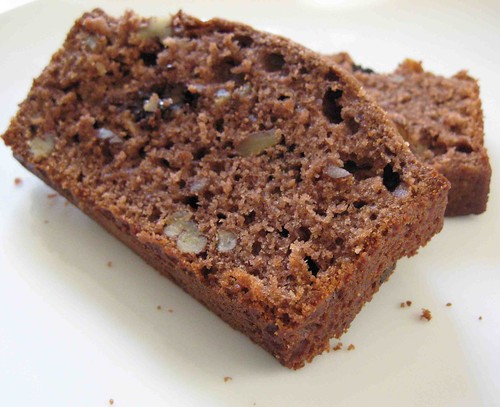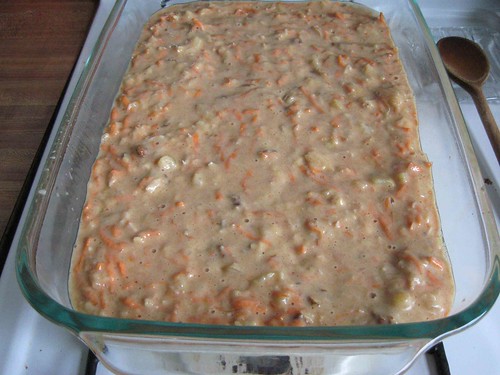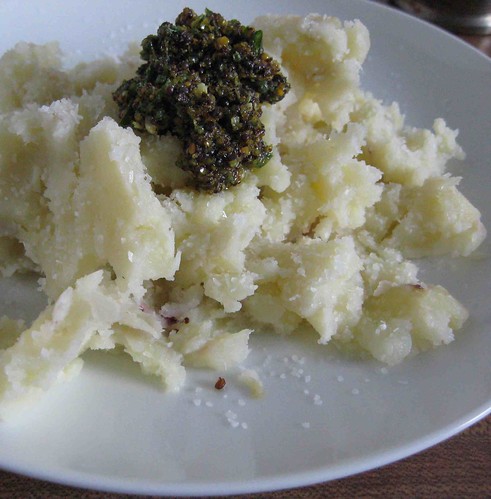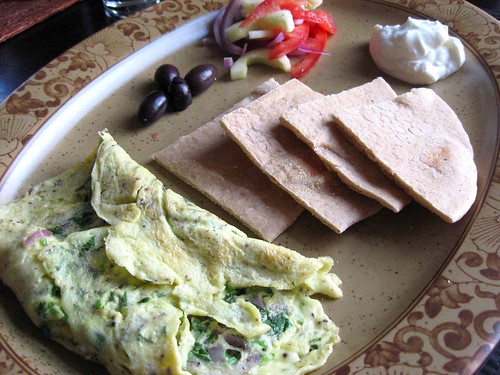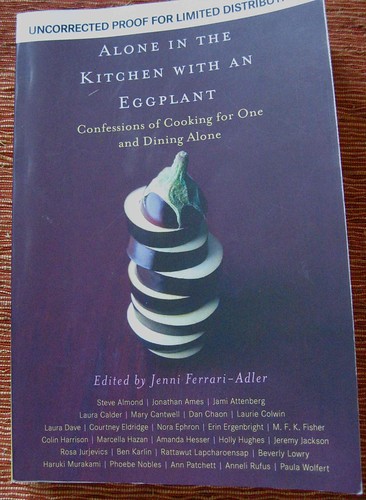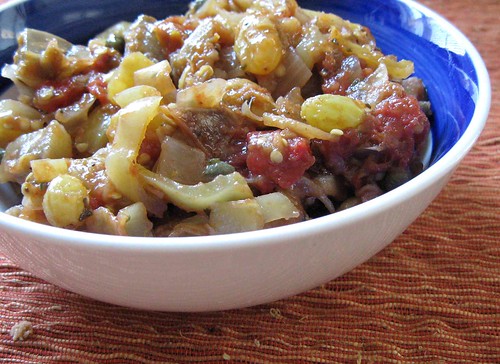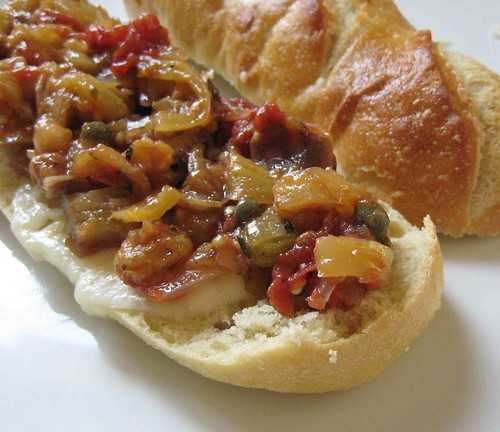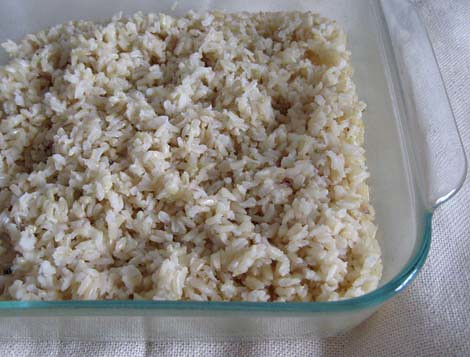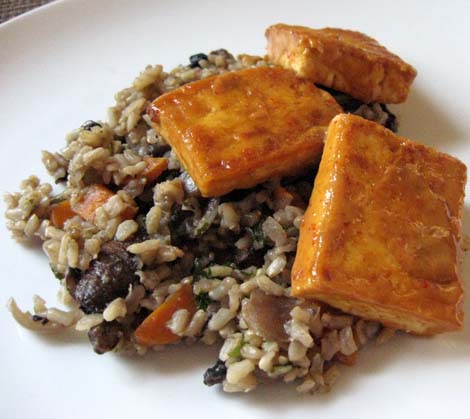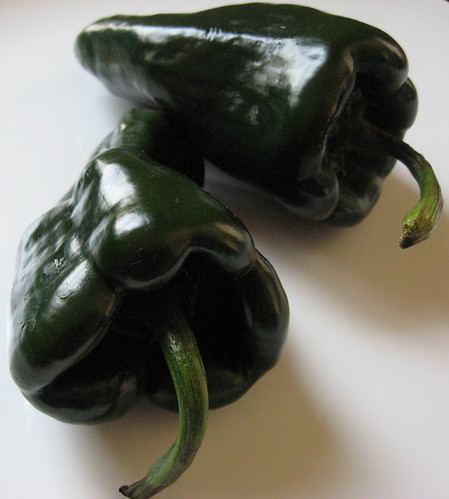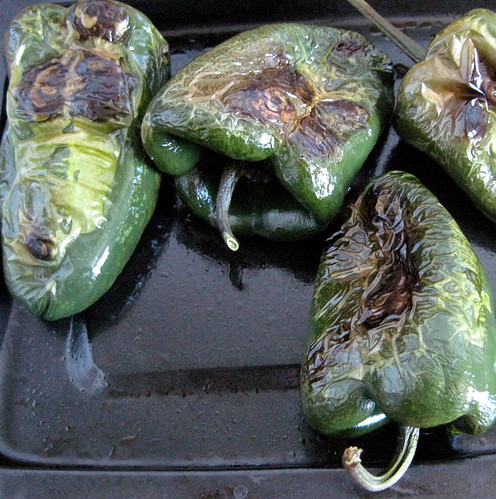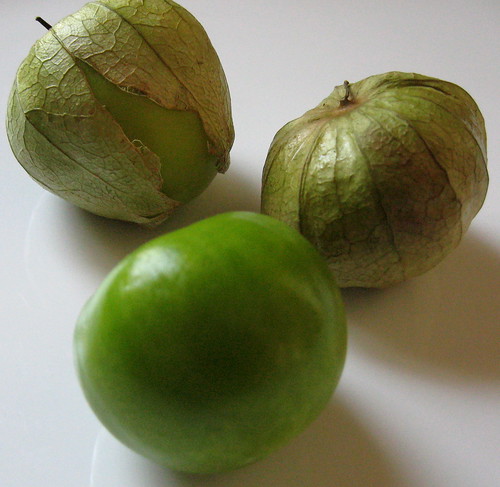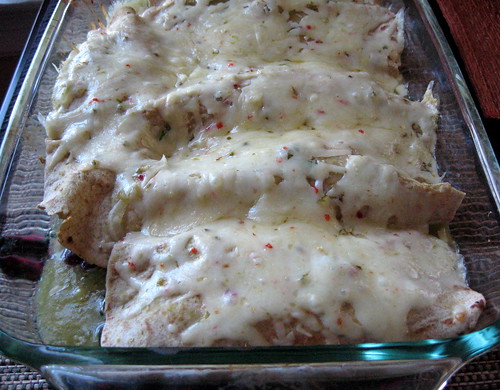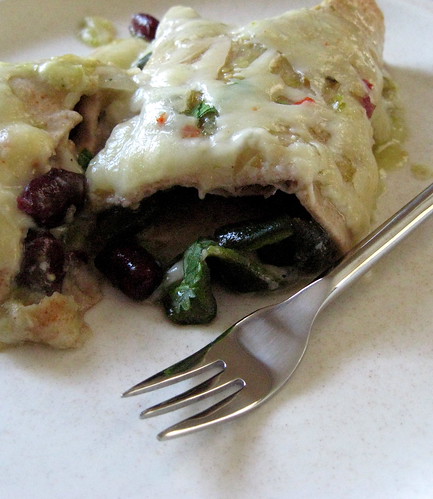The myriad cuisines of India all love their vegetables! Veggies are diced and sliced, grated and mashed, stir-fried and curried into hundreds of vegetable dishes. In this series, the A to Z of Indian Vegetables, we take an alphabetical journey through the various avatars of vegetables relished in Indian cuisine. For each letter, we will make a tasty vegetable dish that illustrates one manner in which vegetables are savored in India. The "Z" of Indian Vegetables
The "Z" of Indian VegetablesThe letter
Z inspired twenty-four
zesty Indian flavors!
First, we take a tour of the
Zany
Zucchini Cafe. Our menu is diverse, the choices are many, but they have one thing in common- you guessed it,
Zucchini, that mild and juicy summer squash!
Let's start with the breakfast menu. We have a choice of three savory dishes today. First up,
Asha of
Aroma/ Foodie's Hope serves up her
Zucchini Carrot Adai, which is brimming with nutrition in the form of brown rice, dals and vegetables.
The second is another savory pancake prepared by
Jyothi of
Andhra Spicy. Her
Zucchini Besan Puda is made with a instant batter of chickpea flour and shredded zucchini, with a touch of cumin seeds.
The third breakfast choice is a soft, spongy savory cake.
Zucchini Tower is the lofty creation of
Live2Cook of
Live To Cook and is rich in dals and succulent zucchini, steamed in special molds.
All three breakfast choices come with a bowl of creamy
Zucchini Chutney shared by
Lakshmi of
Veggie Cuisine. The combination of hot-off-the-griddle dosas and steaming hot idlis with the cool chutney promises to be delicious.
Our lunch and dinner menu is very extensive, as you will see. For a classic Indian appetizer, we offer a crisp and golden
Mixed Platter of Zucchini Bhajjis, courtesy
Priyanka of
Lajawaab.
As for the main course, we have something for everyone. If you are in the mood for something simple and home-style,
Suma of
Veggie Platter has a comforting
Zucchini Tomato Pappu or dal that will warm you from the inside out.
Do we have any veggie lovers in the house today? I have a feeling we do! For you,
Archana of
Tried and Tested Recipes presents her signature
Zucchini Zaaykedar Sabzi- a medley of juicy vegetables sprinkled with the choicest seasonings and baked to perfection.
For those diners who are calorie-conscious, we have just the thing for you too:
Zlamushka of
Zlamushka's Spicy Kitchen dishes up her
Zucchini Koftas- tiny bites of shredded cooked zucchini, rolled in crunchy sesame seeds and baked, not fried, then served with rice and a velvety curry.
We know that some people love their dairy, and for them, the perfect choice would be
Zucchini Paneer Sabzi- a combination of crunchy zucchini half-moons and creamy paneer cubes, stir-fried perfectly by
Musical of
Musical's Kitchen.
Finally, for those seeking good old-fashioned restaurant style richness, we present
Raaga of
The Singing Chef and her
Zucchini Capsicum Makhanwala- here, zucchini dances a tango with a medley of colorful peppers in a rich and creamy sauce that is delicately flavored.
Ok, now that we had our fill of zucchini, we have a lot more delicious food on display today. The next
Z vegetable is colored the daintiest shade of purple- the purple yam or
Zimikand.
Suma of
Veggie Platter cooks into a sweet and creamy dessert that is the color of pale lilac- go take a look at her
Zimikand Halwa.
In a burst of vegetable love,
G V Barve of
Add Flavour uses five
Z zutaten ("ingredients" in German) to make a vibrant and colorful dish of
Mixed vegetables.
Then comes a
Z fruit, the appeti
zing
Zardaloo or dried apricot.
Bee and Jai of
Jugalbandi write a wonderfully informative post, then go on to share a vegetarian version of a traditional
Zoroasterian dish- their creative stew is called
Zardaloo zSali zSoy!
Coming to the
Z spices...
First, a spice that has reached the
zenith of expensive taste:
Zafaran or saffron, the most prized spice in the world, more expensive than gold (weight for weight)! In Indian cooking, saffron is most likely to find its way into festive rice dishes and desserts.
Anita of
A Mad Tea Party writes a beautiful ode to the precious Kashmiri saffron and shares a recipe for the most exquisite dessert-
Zafraani Zamadud or yogurt made with saffron-tinged milk.
Dhana of
Fresh Kitchen uses saffron to bring a delicate fragrance and flavor to her very unusual
Zafarani Pulao, made with a harvest grain blend instead of rice.
Manasi of
A Cook At Heart takes a cue from the latest Bollywood blockbuster and make a
Zafrani Pulav- Amitabh-style, rich with raisins and nuts, and redolent with whole spices.
The next spice is actually a spice blend, and it has a definite
zing to it:
Zaatar is a flavorful thyme-based spice mix that is popular in the Middle East.
Nandita of
Saffron Trail sprinkles zaatar between sheets of tender dough and turns out some flaky and golden
Zaatar Flavored Parathas.
Saju of
Chachi's Kitchen shares a wonderful recipe for making zatar, then uses it creatively in a
Zaatari Salsa that she uses, along with roasted zucchini, in a creative chapati wrap.
Now it is the turn of a
Z dish that is as non-rit
zy and non-ja
zzy as it can get: the simple and rustic
Zunka of rural Maharashtra. Sauteed vegetables are cooked with chickpea to make a simple and tasty dish.
Suganya of
Tasty Palettes uses a trio of colorful peppers to put together her
Zunka with Capsicum- go take a look at her gorgeous pictures jumping off the screen.
Madhuli of
My Foodcourt uses tender and fragrant fresh fenugreek leaves to make this beautiful dish of
Zunka with Fenugreek- and she has some interesting information about an alternative name of this dish too.
The next
Z word stands for
zip and
zilch...it is a big fat
zero, as in
Zero-Oil!
Dhana of
Fresh Kitchen tries a dish from a new no-oil cookbook, and her
Zero-Oil Kebabs look 100% flavorful.
We end this last round-up with two words that represent that pi
zza
zz which is the signature of Indian cuisine: the word
zhanzhanit in Marathi, and the word
zhaal in Bengali both mean uber-hot or ultra-spicy.
Aarti of
Aarti's Corner pounds together roasted chillies, garlic and peanuts to make this unbelievable
Zhanzhanit Thecha.
G V Barve of
Add Flavour makes her
Zhanzhanit Thecha with some fiery red chilli powder.
Finally, for a tasty tea-time snack,
Aarti of
Aarti's Corner tosses together puffed rice with lots of goodies and a generous dose of chillies to make a popular Bengali street food-
Zhaal Muri.
************************************************************
Z is for Zucchini Kofta Curry: Ze End!In January of this year, I found myself in a new city, recovering from a very stressful year, facing the end of a blogging break that had stretched to several months. After many years of long working hours and few days off, I suddenly had quite a bit of time on my hands while I was moving towards the next phase of my working life. Which could mean only one thing: time for a new series on the blog!
I knew exactly what I wanted to focus on. We are constantly being bombarded with findings about nutrition, and while so many of the studies remain controversial, one fact is simply undeniable: it is just a really good idea to pump up our
vegetable consumption. Vegetables are almost magical- they are low in fat and calories, and simply bursting with naturally occurring chemicals that do wonders in the human body- fighting chronic disease and promoting healthier lives. The fact is, for most of the people on this planet, vegetables are simply unaffordable and inaccessible. For a well-to-do and well-fed person like me, it would be a shame if I did not take advantage of my privileged life and eat to keep my body as healthy as I can. And as I started to work on increasing my vegetable consumption, it made sense to start "at home", learning all that I could about the cuisines of India and their love for vegetable dishes. As for cooking by alphabet, it is just a
silly whimsical way of going about my little journey. A way to amuse myself.
At the same time that I started this series, I completely over-hauled my method of
meal planning. Earlier, I would decide to make, say, dal and rice for dinner, with vegetables as an after-thought. My new method is:
Veggie-Centric Meal Planning. I keep my kitchen well-stocked with vegetables by shopping every weekend.
When I want to plan a meal, I look at the vegetables that I have on hand and let the vegetables "suggest" a dish to me. Carbs and proteins are added to complete the meal. If I spy a cauliflower in there, I might (a) pair it with frozen peas and a small potato to make a stir-fry, then make simple dal and rice/ khichdi to complete the meal, (b) roast the florets, toss them with olives and caper, then make a spaghetti with soy meatballs and tomato sauce to complete the meal, (c) for a "special treat" dinner, make pav-bhaji. In the same way, peppers, onions and mushrooms could find their way into an Indian-Chinese fried rice (with some egg strips thrown in) or a Punjabi-inspired curry, or a pasta dish or a quesadilla or an omelet, depending on my mood and the time on hand. For 7 months now, I have been planning everyday meals
starting with the veggies and I love it! It is not a very glamorous method, but it makes meal planning fun and easy, and it always works (for me). I vary the menu all the time, borrowing
shamelessly merrily from all possible cuisines, altering dishes as I need to, to suit our taste and convenience. A couple of tips that I have found useful:
a) I keep a large box in the fridge for "
odds and ends" of vegetables- a half of an onion, a wedge of cabbage that got left over from a subzi...these come in useful to fill out future meals and virtually eliminate wastage of precious veggies. For instance, one large head of red cabbage recently was served at four meals- as a "pachadi", with other veggies in a noodle stir-fry, in a "thoran" and a raw garnish for quesadillas.
b) I find that some vegetables- green peppers, green onions (spring onions), fresh herbs, fresh lemons go a long way in making easy dinners taste really good by adding a
fresh note. I always try to keep these on hand.
c) Thursday or Friday nights, I plan a
fridge-cleaning menu, trying to use up all perishable veggies and get ready for the shopping trip the next day. Some dishes- mixed veg pulao, vegetable noodles, vegetable soup- are just made for such occasions!
It seems that "Vegetable Love" is in the air. My Dad (I call him Baba) has recently started reading this blog...and I am sure he is quite amused by my enthusiasm about vegetables (I was a very poor eater as a child). He is a complete foodie, the sort who appreciates down-to-earth food- including fresh produce cooked at its seasonal best. As an avid gardener, he is fascinated by the biodiversity of fruits and vegetables we see around us. A couple of days ago, this is what he mailed me. In Baba's own words,
"I had been to the market this morning and bought some 'Kantoli', i.e. Raan Karli or 'Phagala' as they are called in Konkani. They make wonderful 'Kaapa', you know. We made that this afternoon. I'm sending you some pictures in case you are interested. The thin slices of the 'Kantoli' are shallow fried in rice flour to which chilli powder, dhane and jira are added with salt to taste.They make a lovely crispy dish which goes very well with Rice and Daal." (Dhane is coriander seeds, and jira is cumin seeds...in this case, it is the powdered spices that are used).
This is what the
kantoli looks like- a very unusual vegetable, small in size, with a prickly exterior.
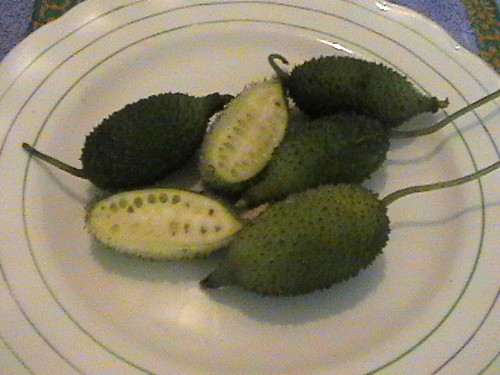
Here is the fried
kantoli:
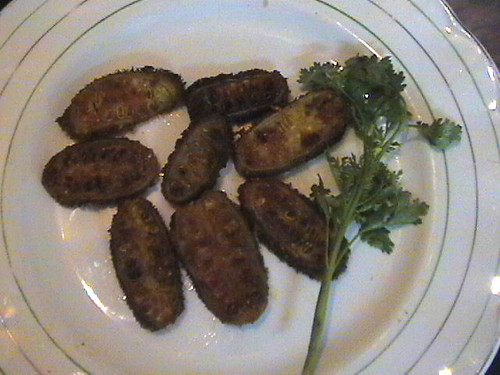
Now, coming to my entry: Z came around at just the right time, at the peak of summer, when it is raining zucchinis in the vegetable markets! This is my contribution to the menu at the Zany Zucchini Cafe. I wanted to make something rich and festive for this last round. In my parents' home, a "party dish" that has always been very popular is
Kofta Curry, with fried dumplings bobbing about merrily in a rich tomato-onion sauce. I hesitate to make it because the dumplings are made of bottle gourd and chickpea flour, and I don't really have access to bottle gourd. The fact that the dumplings are traditionally deep-fried puts me off even more.
Then, a few days ago, I was watching TV when I caught a commercial selling an As-Seen-On-TV kitchen product called the
Pancake Puff Pan (nothing but a
appey pan or aebelskiver pan or appam chatti or whatever you want to call it). Now, I don't know if you have seen these type of ads. They are very very smart ads: they sell a kitchen product that is billed as the latest and greatest invention ever. They demonstrate hundreds of uses for that kitchen product, and in the short span of 3-4 minutes, they leave you utterly convinced that the product is about to change your life forever. In any case, this ad showed a dozen different uses for the puff pancake pan- making mini ball-omelettes, and mini pizza puffs- that left me gaping with awe. A little light bulb lit up over my head, and I thought-hmm, I should try making my koftas in my appey pan. So, as you will see in the recipe below, I did make the koftas in the appey pan, with only a few drops of oil. Was the experiment successful? Well, the koftas that resulted were not perfectly cooked all the way through, and so could not be eaten just as they were. But, once they were added to the curry and simmered for a few minutes, they were cooked to perfection! This is definitely a method that I'm going to use from now on...I might have to work on it to determine the heat level needed to let the koftas cook all the way through. In fact, the next experiment is going to be- making the pakodas for kadhi-pakoda.
This time, I did not add any garam masala or other spices to the curry. I let the flavors of the coconut, poppy seeds and sesame seeds shine, and it tasted quite delicious to me. With all those ingredients, this is a very rich curry!
Zucchini Kofta Curry
 (serves 4-5, adapted from the Marathi cookbook "Ruchira" by Kamalabai Ogale
(serves 4-5, adapted from the Marathi cookbook "Ruchira" by Kamalabai Ogale1.
Make the koftas: Mix 1.5 C shredded
zucchini, 1/2 C
besan (chickpea flour), 2 T minced
onion, 1 t
coriander-cumin powder, and
salt, turmeric and red chilli powder to taste, and make a thick batter (you do not need water, the water from the zucchini is sufficient). Spray a
appey pan with oil, then drop little spoonfuls of the batter into each depression.
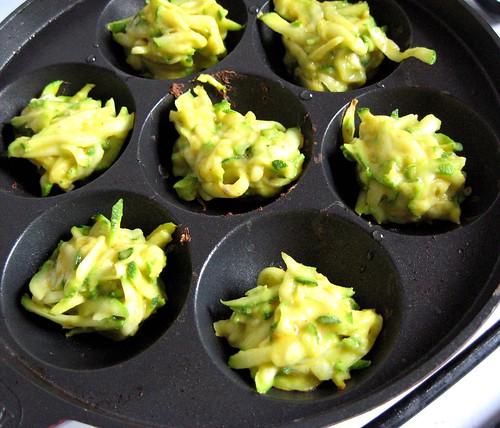
Cook until golden brown on both sides. Set the koftas aside. This yields about 20 small koftas.
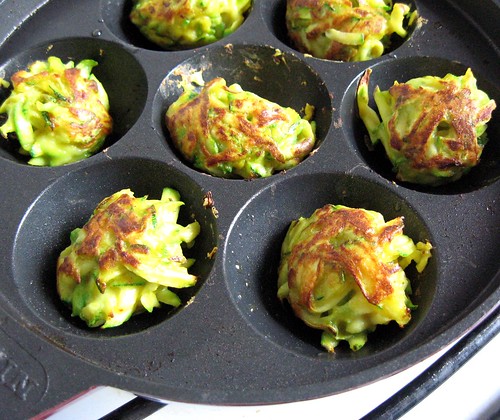
2.
Make the onion-tomato base: Heat 2 t
oil in a saucepan. Fry 2 chopped
onions until lightly browned. Add 1 t
ginger-garlic paste and fry for a minute. Add 2 C
tomato puree,
salt, turmeric and red chilli powder to taste and simmer for 5-10 minutes. Puree to a fine paste.
3.
Make a seed powder: Toast together 2 T white
sesame seeds and 2 T
poppy seeds, then cool and grind to a fine powder.
4.
Make the curry: Mix the tomato-onion paste, seed powder and 1/2 C
coconut milk and bring to a gentle boil. Add some water as required to make a thick curry, then simmer it for 5 minutes. Add the koftas and simmer gently for 5 minutes more. Serve hot.
As you can see in the picture above, I served the zucchini kofta curry with fresh layered parathas,
dahi kanda (sliced onions and minced cilantro dressed with yogurt) and a wedge of lemon. It made for a very enjoyable dinner!
I want to thank
Lakshmi for suggesting that I convert this series into an event in the first place. Before she left that comment, I had no inkling that anyone would have the faintest interest in being part of this. Also, a big hug to
Swapna for designing a logo for this event...I was so pleasantly surprised when she mailed it to me. The credit for the way things would shape up every week goes to the enthusiastic bloggers who sent in entries, whether they participated in one event, a few, several or *all twenty-three*, like the champions
Asha,
Bee and Jai and
Suma!
I have learnt more about vegetables in the last few months than in the past twenty-some years. Writing the round-up every Sunday was also very stimulating as I tried to group the entries into an order that was informative and fun. My future Sunday mornings are going to feel very empty. A
zillion thanks to the
zany participants and the
zealous readers who made this serie
z so special for me! You gal
z and guy
z are
ze BEST :D
One last thing: many of you have been asking me,
What comes next? Well, it so happens that I am starting a new job tomorrow (perfect timing, eh?), and life is about to get very hectic yet again. I have had my fill of hosting events for a while, with this weekly series and the behemoth RCI. For a few months, I will focus on the other things in my life- my job and my academic commitments and a little project that I want to do for my local community kitchen. I will keep blogging, of course, and participating in the wonderful events going on in the food blog world as much as I can. Wow, this has become a HUGE post, so I'll sign off now!
Previously on the
A to Z of Indian Vegetables...
A is for Aloo Gobi: North-Indian Stir-Fry
B is for Bharli Mirchi: Stuffed Vegetables
C is for Carrot-Cashew Payasam: Desserts
D is for
Dum ki Arbi:
Dum Style of Cooking
E is for Egg-Fried Rice: Rice and Vegetables
F is for Foogath: South-Indian Stir-Fry
G is for Gobi Paratha: Vegetables in Breads
H is for Hariyali Tikki: Vegetables in Appetizers
I is for Idli with Vegetables: Vegetables for Breakfast
J is for Jalfrezi Vegetables: Restaurant Style
K is for Kati Roll: Vegetables and Paneer
L is for Lasuni Dal Palak: Vegetables and Lentils
M is for Malai Kofta: Dumplings
N is for Nargisi Kebab: Vegetables and Eggs
O is for Onion Chutney: Vegetables in Chutneys
P is for Pattagobi Pachadi: Vegetables in Salads
Q is for Quick Carrot Pickles: Vegetables in Pickles
R is for Radish Paratha: Root Vegetables
S is for Spinach Amti: Green Leafy Vegetables
T is for Tomato Red Pepper Saar: Soups
U is for Undhiyu: Regional Delicacies
V is for Vegetable-Cheese Sandwiches: Mixed Vegetables
W is for Wild Mushrooms and Walnuts: Fungi, Fruits, Nuts
X is for eXploration: Pattypan Squash Sambar
Y is for Yam Phodi: Vegetables as Themselves

